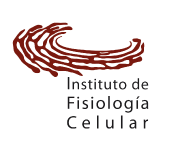Numerous elements involved in shear stress-induced signaling have been identified, recognizing their functions as mechanotransducing ion channels situated at cellular membranes. This form of mechanical signaling relies on transmembrane proteins and cytoplasmic proteins that restructure the cytoskeleton, contributing to mechanotransduction cascades. Notably, blood flow generates mechanical forces that significantly impact the structure and remodeling of blood vessels. The primary regulation of blood vessel responses occurs through hemodynamic forces acting on the endothelium. These mechanical events intricately govern endothelial biophysical, biochemical, and genetic responses. Endothelial cells, positioned on the intimal surface of blood vessels, have the capability to express components of the glycocalyx. This endothelial structure emerges as a pivotal factor in mechanotransduction and the regulation of vascular tone. The endothelial glycocalyx assumes diverse roles in both health and disease. Our findings propose a connection between the release of specific enzymes from the rat liver and variations in the hepatic blood flow/mass ratio. Importantly, this phenomenon is not correlated with liver necrosis. Consequently, this review serves as an exploration of the potential involvement of membrane proteins in a hypothetical mechanotransducing phenomenon capable of controlling the release of liver enzymes.
ABSTRACT




